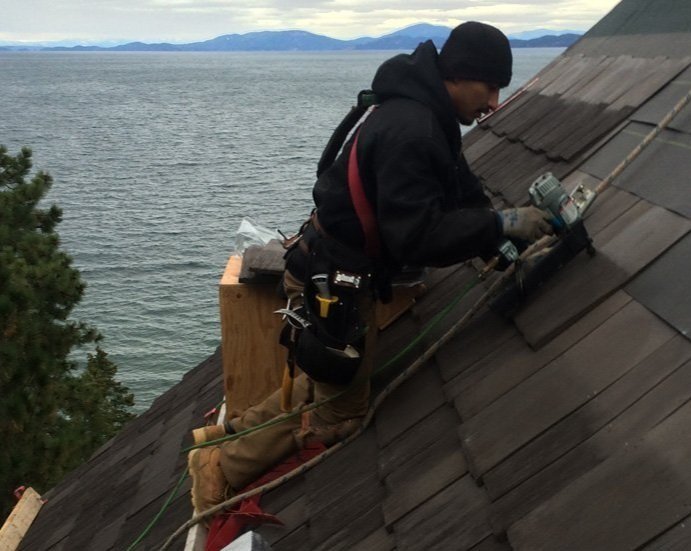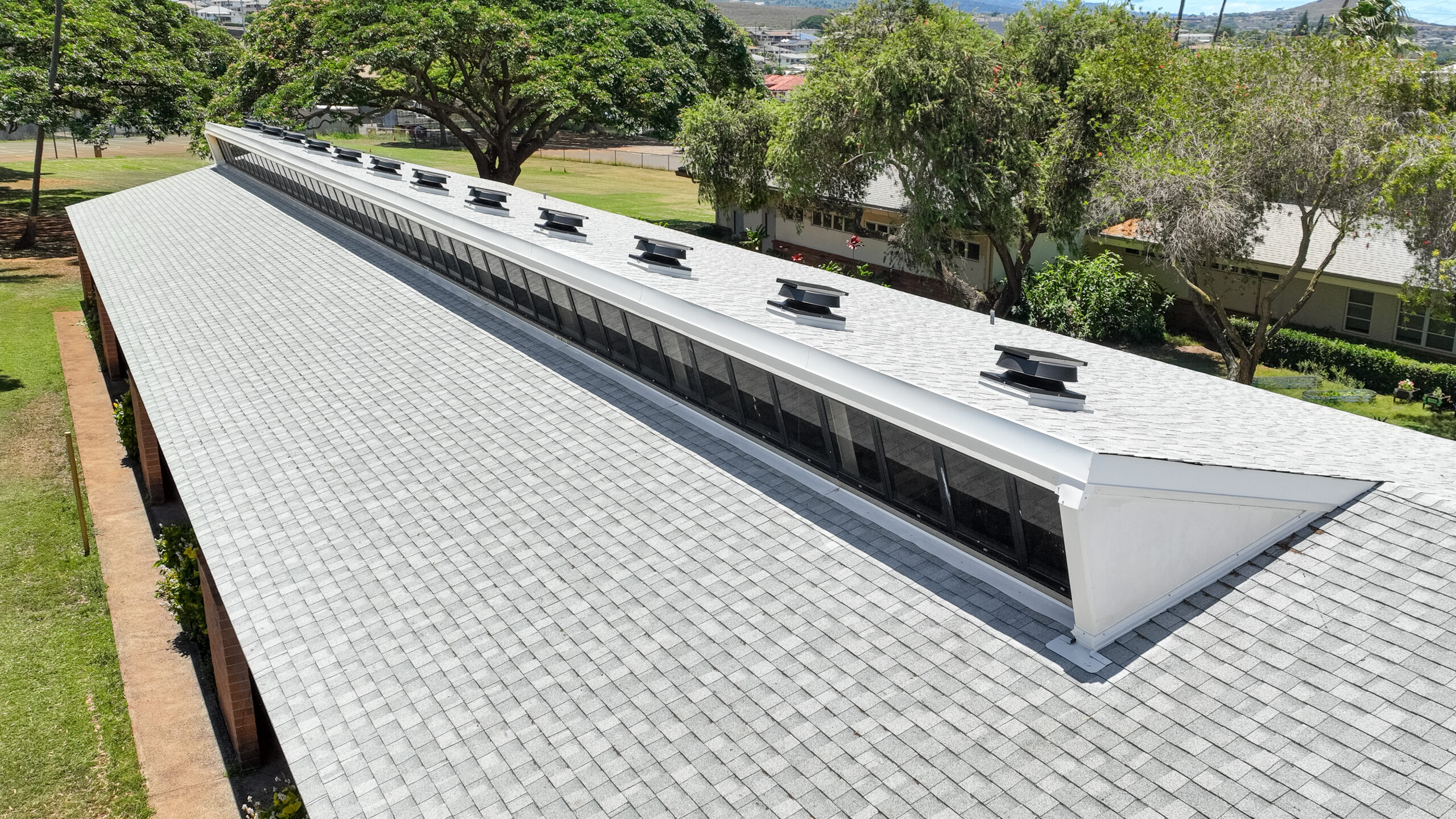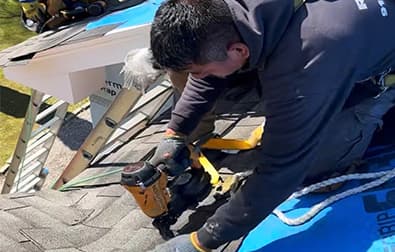Uncover Typical Roof Troubles and Exactly How to Address Them Properly
When it pertains to your roof, spotting troubles early can save you money and time. You could discover water stains on your ceiling or split shingles throughout your regular checks. Neglecting these indications can lead to larger issues down the line. Recognizing exactly how to identify and resolve these typical roof covering issues is crucial for maintaining your home's stability. But what details steps should you require to guarantee your roofing remains in top problem?
Identifying Roofing System Leakages and Their Reasons

Next, analyze your roofing from the outside. Seek missing or cracked ceramic tiles, rusted flashing, or damaged rain gutters. Take note of locations around chimneys, vents, and skylights, as these are common leakage sources. If you detect any one of these issues, it's essential to address them without delay.
During hefty rainfall, observe your roofing for any kind of pooling water or drips. This can disclose leakages that could not show up throughout dry problems. By remaining attentive and frequently inspecting your roofing, you can capture leaks early and shield your home from further damages.
Dealing With Missing or Harmed Shingles
When you discover missing out on or damaged roof shingles, it's vital to act swiftly to avoid additional concerns. You'll want to determine the level of the damages, repair any kind of missing out on tiles, and consider precautionary upkeep tips to maintain your roof covering in top shape. Taking these steps can conserve you money and time down the roadway.
Identifying Roof Shingles Damage
Although roof shingles are created to withstand the aspects, they can still suffer damage in time, causing possible leaks and costly repair work. To identify roof shingles damage, start by examining your roofing for missing, split, or curled roof shingles. Try to find indications of discoloration or granule loss, which can indicate degeneration. Focus on any areas where shingles are raising or buckling, as these can create vulnerabilities. It's additionally a good idea to look for water discolorations or mold and mildew on your ceilings and walls, as these may signal leakages stemming from damaged roof shingles. On a regular basis monitoring your roofing system, especially after severe climate, can aid you catch issues early and preserve the integrity of your home.
Repairing Missing Roof Shingles
After spotting tile damages, the next step is resolving any kind of missing out on or damaged tiles without delay to protect against additional problems. If you can, climb onto your roof covering securely, putting on suitable equipment. Taking activity rapidly will help keep your roofing's integrity and expand its life-span.
Preventive Maintenance Tips
How can you maintain your roofing system in leading form and avoid tiles from going missing out on or getting harmed? Routine inspections are vital. Inspect your roof a minimum of twice a year and after extreme weather condition. Look for indications of wear, such as curling, cracking, or loosened shingles.
Maintain seamless gutters clean and devoid of debris to ensure correct water flow and stop shingle damage. Cut looming branches to reduce the threat of them scraping against your roof covering during storms.
Consider applying a protective sealer to extend your shingles' lifespan. If you discover any type of concerns, resolve them promptly to avoid expensive repair services later on. Taking these safety nets can conserve you time and money while guaranteeing your roofing system stays sturdy and dependable.
Comprehending Roofing Air Flow Issues
Correct roof covering air flow is essential for maintaining the longevity and efficiency of your roofing system, as it assists control temperature and moisture levels in your attic. Without adequate ventilation, you could encounter issues like extreme heat buildup, resulting in premature shingle wear and tear, or enhanced humidity that can create mold and mildew development and timber rot.
To evaluate your roofing system ventilation, look for indicators of getting too hot, such as distorted shingles or a warm attic room. Try to find blocked vents, which can restrict air movement and catch heat. You should assure your consumption and exhaust vents are balanced, permitting correct air exchange.
Addressing these issues without delay can safeguard your roof covering and save you from pricey repair work down the line. Stay positive in maintaining your roofing's ventilation to secure your home.
Dealing With Roof Covering Moss and Algae Growth
While you could appreciate the all-natural appearance of moss and algae on your roofing system, these microorganisms can result in substantial problems if left uncontrolled. They trap wetness, which can lead to roof shingles degeneration and leakages. To tackle this issue, start by getting rid of any type of noticeable growth. Utilize a soft-bristle brush to delicately scrub away the moss and algae, taking care not to harm your tiles.
Next, think about applying a specialized roofing system cleaner or a mix of water and bleach to kill remaining spores. Regular inspections and upkeep will certainly aid stop moss and algae from returning, guaranteeing your roofing continues to be in great shape for years to come.
Repairing Storm Damages and Wind Concerns
After a tornado, it's important to assess your roof covering for damage created by high winds and hefty rain. Beginning by inspecting for missing or damaged roof shingles, as these are common casualties.
Try to find any type of drooping areas, which might suggest water accumulation or structural concerns. If you discover any particles, like branches or leaves, remove them meticulously to prevent further damages. If your seamless gutters are blocked, clear them to guarantee proper drainage.

For small fixings, you might manage it yourself, but don't think twice to call a professional for substantial damages. Remember, acting rapidly can conserve you from larger problems down the line, so take that evaluation seriously and resolve any issues immediately.
Acknowledging Indicators of Structural Damage
Exactly how can you tell if your roof covering is experiencing from structural damages? Next, check for splits or spaces in the wall surfaces or ceiling, as these can indicate changing or clearing up due to roofing system concerns. If you observe missing or damaged shingles, it's crucial to resolve them rapidly, as they can reveal your roofing system to more damage.
Regular Maintenance Tips for Long Life

Regular Evaluations Significance
Considering that a roofing is your home's very first line of protection against the elements, regular inspections are important for maintaining its integrity (roofing contractors oahu). You must inspect your roofing system at least twice a year, preferably in springtime and autumn, to catch potential concerns early. Try to find missing or damaged tiles, indicators of leakages, and any particles that can trigger problems. Pay attention to locations around chimneys, hop over to here vents, and flashing, as these are common weak places. If you observe anything unusual, do not think twice to get in touch with a professional for a detailed analysis. Staying on par with these inspections can protect against expensive repair work down the line and lengthen your roofing's lifespan, guaranteeing your home their website stays safe for years ahead.
Proper Rain Gutter Upkeep
Normal roofing inspections naturally lead to the importance of proper seamless gutter maintenance. Examine your seamless gutters for leakages or rust; they can create water damages to your roofing system and home. By following these pointers, you'll prolong your gutters' life-span and safeguard your roof.
Regularly Asked Concerns
How Can I Select the Right Roofing Product for My Home?
To select the appropriate roof material for your home, think about climate, durability, and visual appeals. Research study choices like asphalt shingles, steel, or tile. Think of upkeep needs and spending plan to find what matches you best.
What Are the Indications I Need a Roofing Substitute Instead of Fixing?
If you discover prevalent leaks, sagging, or missing out on shingles, you may require a roof substitute. If your roof covering's nearing its lifespan or has considerable damages, it's time to home ponder a full replacement rather of simply repair work.
Just how Frequently Should I Arrange Specialist Roof Evaluations?
You must set up professional roofing system examinations a minimum of annually, ideally in springtime or loss. This aids catch possible concerns early, ensuring your roofing system stays in great problem and lengthening its life-span.
Can I Mount a New Roof Covering Over My Old One?
You can install a new roof over your old one, but it's necessary to inspect regional building ordinance and ensure the existing roofing's condition is sound. This method can save money and time, but consider potential complications.
What Is the Ordinary Lifespan of Different Roofing Materials?
The average life expectancy varies by product: asphalt tiles last 15-30 years, steel roofings can last 40-70 years, while ceramic tile or slate roofing systems may go beyond half a century. Select carefully based on your environment and spending plan.
Final thought
By staying watchful and dealing with common roof covering issues quickly, you can protect your home and expand your roof covering's life expectancy. On a regular basis check for leaks, harmed roof shingles, and air flow problems, and tackle moss or algae development before it worsens - roofing companies honolulu. After storms, check for any type of damage and make essential repair work. With a little routine upkeep, you'll not only secure your investment yet likewise enjoy comfort understanding your roof remains in top form. Don't wait-- act currently!
Comments on “You’ll find that top-rated roofing contractors oahu are in steady demand year-round.”